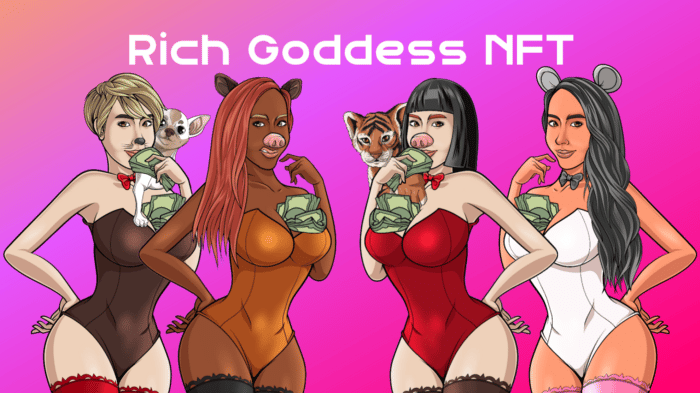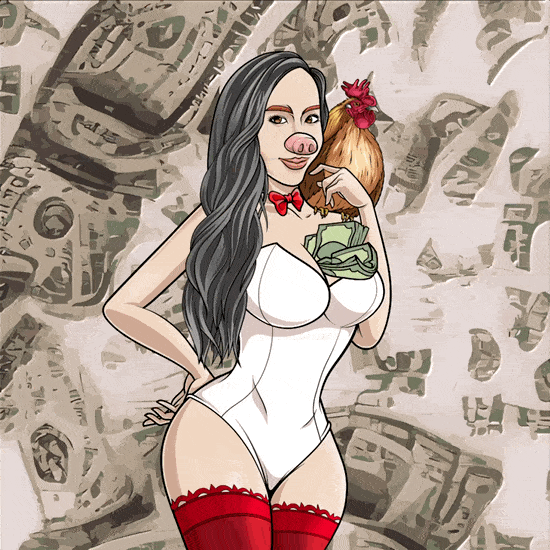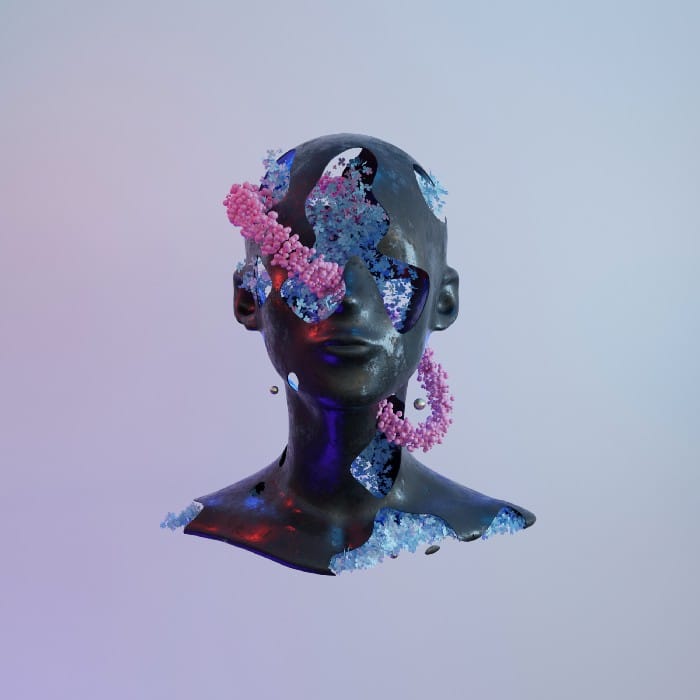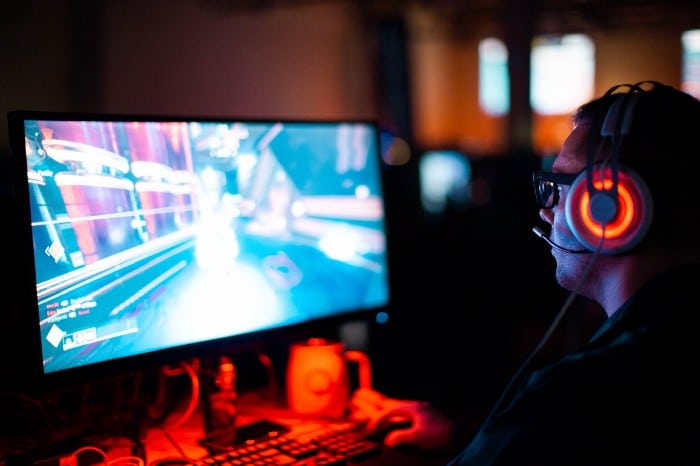Disclaimer:
I am not your financial advisor (yet).Do not take anything on this channel as financial advice, EVER.
DO YOUR OWN RESEARCH!
Consult a professional investment advisor before making any investment decisions!
My videos are only for sharing my opinions and educational purposes 😉
ANNOUNCEMENT!


I am launching my own NFT collection (dubbed Rich Goddess) and we will be doing giveaways of Rich Goddess NFTs and ETHs, join our socials to get updated on the good things happening!✨💸

𝗧𝘄𝗶𝘁𝘁𝗲𝗿
https://twitter.com/RichGoddessNFT?t=IFUS1CU6fPAgOJl7EoFEYQ&s=09 𝗜𝗻𝘀𝘁𝗮𝗴𝗿𝗮𝗺
https://www.instagram.com/richgoddessnft/
𝗗𝗶𝘀𝗰𝗼𝗿𝗱
https://discord.gg/CQurrHh7Kd
Jack Dorsey, former CEO of Twitter and current CEO of Block, Inc., made the news in March 2021 after selling his first tweet as an NFT for an incredible $2.9 million.
Elsewhere, the NFT of the Nyan Cat, a rainbow casting feline, sold for almost $600,000!
But perhaps what carries the day is that by the end of 2021, the marketplace for non-fungible tokens had reached $41 billion, up from $2.5 billion in the first half of 2021.
And at that figure, the NFT market is almost catching up to the total size of the worldwide fine art market.
So, with such mouth-watering numbers being thrown around, it’s tempting to get involved in NFTs.
But before you jump into things, it’s only right to learn everything you can about them.
Now, What Is an NFT?
To start us off, let me tell you what the letters N-F-T mean.
NFT is an acronym that stands for non-fungible token, and we’ll start by explaining the “N-F” part, which stands for “non-fungible.”
In economics, a non-fungible asset has unique properties, meaning it can’t be interchanged with something else.
Let me just quickly give you an example to help clarify this for you.
Have you ever heard of the Mona Lisa painting?
Perfect.
That’s a good example of a non-fungible asset, and let me tell you why.
Although the painting can be copied or photographed, the original Mona Lisa is still the original, and the replicas don’t have the same value.
That means you cannot exchange them for the real deal.
Now, we have just explained the “N-F”, in NFT, the abbreviations for “non-fungible”, so let’s now go for the “T”.
The “T” in NFT stands for token, which is basically a digital certificate representing the value or rights that are provided and sold to identify an asset’s ownership and a transaction’s validity.
That said, we now have enough to define NFT.
So, putting everything we have just said together, an NFT or non-fungible token is a digital certificate showing that a particular digital asset — for example, music, art, videos, or in-game items — is unique and not interchangeable.
It is proof of authenticity since it shows the ownership of a digital asset and associated transactions.
And let’s just add something here.
NFTs are stored on a blockchain, often the Ethereum blockchain.
But to pay no or a very low gas fee, people also launch NFTs on other blockchains like Polygon and Solana.
In case you don’t know yet, gas fees are paid by users to compensate for the computing power required to process and validate transactions on the blockchain.
By storing your NFTs on a blockchain, you ensure that your assets, or NFTs, are one-of-a-kind, making it hard for people to change or steal them.
So, if you just right-click and save the image of an NFT, you won’t be earning any easy money because your image does not have the information that makes it part of its blockchain. 🙁
Why Did NFTs Become So Popular?
NFTs are increasingly popular because they allow people to verify the rarity and authenticity of just about any digital asset, giving them more value.
Remember our Mona Lisa example?
While there are countless copies of the Mona Lisa in circulation, there is only one original, which, as you guessed, is also the most valuable.
Similarly, with NFT technology, creators are assigned the ownership of the original piece, so even if there are many copies of a digital asset, the original one can still be identified and accorded due value.
Another reason behind their popularity is the vast amounts of money NFTs are fetching in the market.
In fact, this is what woke the world up to the concept.
Sit tight as we get into that in a bit.
Who Is Buying NFTs?
Celebrities, business leaders, politicians, and just about everyone is cashing in on the NFT fever.
Let me share some examples.
Digital artist Beeple sold “Everydays: the First 5000 Days” for $69.3 million through a Christie’s auction.
A 20-second video clip of LeBron James’ “Cosmic Dunk #29” was sold for $208,000.
A CryptoPunk NFT sold for $11.8 million at Sotheby’s first curated NFT sale.
These are just some of the many examples of people buying and cashing in from NFTs.
Uses of NFTs
Now that I’ve simplified what NFTs are, let’s look at how they are used.
NFTs have unlimited use scenarios, which you can expect to see as the space grows in the coming years.
At the moment, however, there are three popular ways NFTs are put into good use:
1. Digital Art

Photo by Polina Kondrashova on Unsplash
Let’s start with the most hyped NFT application- digital art.
If you’ve had your ears on the ground in the crypto space, you’ve likely heard digital art NFTs selling for millions.
From Beeple’s “Everydays: The First 5000 Days” photo collage to Pak’s ‘The Merge,’ people pay up to eight figures to own digital collectibles.
The list of million-dollar NFT sales is long and, frankly, insane!
Before NFTs, digital artists found it hard to monetize their creations.
After all, anyone could copy and download it.
But NFT technology has made it possible to make digital art unique, copyrightable, and monetizable.
And this has encouraged innovation in the industry. With NFT marketplaces now available, NFT digital collectibles are a big business.
2. Gaming and the Metaverse

The growth of the gaming industry, and growing interest in the metaverse, have pulled NFTs along with them.
If you’ve ever played video games, you understand how the in-game world works.
You not only get fun experiences but are also able to buy and earn unique gaming assets.
And, the metaverse works more or less the same.
You get access to this virtual world that you experience with a digital avatar.
You can also buy assets like virtual land and property.
So, where do NFTs come in all of this?
NFTs are fast becoming the go-to option for representing ownership of a digital asset within games and the metaverse.
You can literally buy something in these virtual worlds and sell it to other players or participants in NFT marketplaces.
3. Smart Contracts for Tangible Goods and Services
While this application isn’t as widespread as the first two uses, I’ve discussed, it is promising.
For instance, Tory Lanez dropped three track records in 2021 as NFTs.
Kings of Leon then became the first band to release an album as an NFT.
But it’s not just music albums — NFTs are also seeing increasing interest in real estate and other areas.
In a couple of years, industries could be using NFTs, as smart contracts, for ownership of goods and services.
How to Invest in NFTs
Now, you’re probably watching this video like, “how can I get a slice of this action?”
First off, it’s important to know that NFT investing is speculative.
So, don’t put in money you are not ready to lose.
The good thing is that you don’t have to be a creator to make money from NFTs.
So how can you go about investing in NFTs?
Here’s a quick breakdown:
1. Research
Before buying any NFT, you want to be well acquainted with it.
Of course, the best place to find NFTs for sale is NFT marketplaces like OpenSea, SuperRare, and Rarible.
Now, while you can’t predict how much an NFT will be worth in the future, there are a couple of indicators to look at.
That is the creator, uniqueness of the piece, ownership history, and prospects of generating income.
2. Fund Your Crypto Wallet and Bid
Once you find an NFT that piques your interest and you want to buy, you simply have to fund your crypto wallet with the marketplace’s accepted cryptocurrency, link it to your newly opened account in the marketplace, and pay/ bid for your NFT.
3. Hold or Resell Your NFT
Once you own your NFT, you can either hold on to it and wait for the value to go up or list it for sale in a marketplace at a markup.
You could also earn income by leasing it.
The Future of NFTs
So, what does the future look like for NFTs?
Is the current hype just a bubble?
While digital assets have shown a tendency to rise and fall, only those that offer real-world applications last in the long run.
And NFTs have shown current and prospective use cases already.
So, I believe the future is definitely bright for the space.
I hope you got some valuable pointers from this article. If you want to learn more about how to reclaim your financial power, be sure to check out my pages / YouTube channel.

Recent Comments